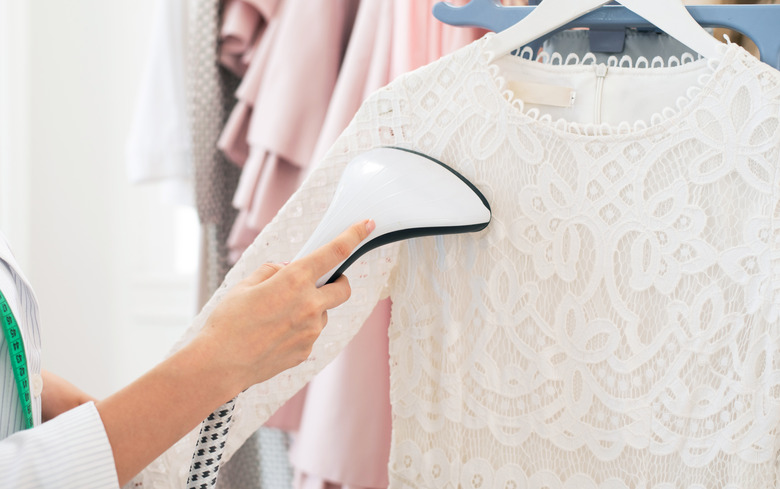How To Clean A Fabric Steamer
We may receive a commission on purchases made from links.
A fabric steamer, also known as a garment steamer, uses tap water to create steam that removes wrinkles from clothing and other fabric-based items. Over time, that tap water traveling through the steamer leaves behind a mineral buildup that clogs the device and reduces its functionality. A regular cleaning with white vinegar and distilled water removes the mineral buildup, restoring the fabric steamer's ability to create ample amounts of steam.
Preventing Mineral Buildup
Preventing Mineral Buildup
Unless your home has a water softener, there's a good chance your local tap water is hard water, which means it contains minerals that could cause a chalky buildup on a showerhead, in the shower, and even in a clothes iron and the garment steamer. If you've noticed such buildup in your home, hard water is the culprit.
Frequent mineral buildup in your clothing steamer means tap water isn't the best option. Instead, mix equal parts tap water and distilled or de-ionized water. This cuts down on minerals responsible for the buildup, such as calcium, while still being safe for the garment steamer. At the opposite end of the spectrum, using only distilled water may harm the steamer over time if it has metal parts inside, so consult the owner's manual for recommended water types for that particular model. Many models are designed for tap water, or the mix of tap and distilled water in areas of excessively hard water.
Removing Mineral Buildup
Removing Mineral Buildup
If your clothing steamer doesn't create as much steam as it should, or if it doesn't steam at all, it's time to clean the inside to remove the mineral buildup. Another sure sign is if you see white or yellowish debris near the steam opening, or even on the clothes after steaming them. Even if your home's tap water isn't particularly hard, it's a good idea to descale the steamer once a year or after every 100 hours of use.
Fill the steamer's water reservoir 2/3 full with distilled water, then the rest of the way with white vinegar. Turn the device on so it creates steam for 30 minutes, or until it uses half the vinegar solution. Let it cool completely, then drain the tank over the sink, or save it for cleaning or for descaling something else in your home, such as a steam iron. If you see any gunky white debris on the outside of the steamer, near where the steam exits the device, wipe it off with a damp cleaning cloth. If it's difficult to remove the buildup, use white vinegar on the cloth instead of water, or spray vinegar directly on the tough spots, wait a few minutes, then wipe the gunk away.
Rinse the tank out, then fill it with equal parts tap and distilled water. Turn the device on again and allow it to create steam until it uses half the water, then allow it to cool again. If the steamer creates plenty of vapor, like it did when new, it's ready to use again. If not, repeat the steam cycle with 1/3 white vinegar, 2/3 distilled water, then rinse again. In some cases, several vinegar steam cycles are necessary to remove all the buildup.
